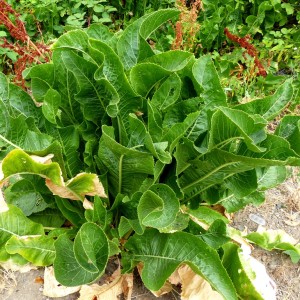Dr M moves on to this very characteristic family which is very easy to recognise – if you keep your wits about you and follow the looking and listening rules of eXtreme botany!
Brassicaceae – the Cabbage family – includes more than 330 genera and 3,700 species World-wide, including many important crop plants e.g. Brassica oleracea (Wild Cabbage) which has been cultivated and bred over the centuries and now comes in many shapes, sizes and varieties including broccoli, cabbage, cauliflower, etc (as startling as this may seem all these different vegetables are just gentically tweaked versions of exactly the same species: Brassica oleracea!).
Then there is also Brassica rapa – Turnip, Chinese cabbage, etc, Brassica napus – Rapeseed etc, Raphanus sativus – Radish, Armoracia rusticana – Horseradish as well as many beloved horticultural garden flowers like Matthiola spp. (Stock).
The Brassicaceae in brief:
- Annual or perennial herbs, alternate leaves, no stipules, often characteristic cabbage or peppery taste and including many wild relatives of crop plants.
- Flowers in racemes or corymbs usually white or yellow sometimes pink etc.
- Flowers radially symmetrical (actinomorphic) with 4 free sepals and 4 petals arranged in a cross (cruciforme – hence the old and still valid family name Cruciferae).
- Stamens: usually 6 comprising 2 outer ones and 4 inner ones.
- Superior ovary of 2 carpels and the fruit is a pod – but don’t confuse this with the “pea pod” of Fabaceae, in Brassicaceae the pod can be either elongated ‘a siliqua’ or flattened ‘a silicula’ – which opens by two valves and releases the seeds.
Example of Brassicaceae:
Herschfeldia incana (Hoary Mustard)
Annual herb of disturbed and waste ground with branched stem up to 100 cm tall with white stiff white hairs (hence the common name: Hoary Mustard). The rosette leaves are pinnately lobed with a large blunt terminal lobe and leaves with dense hairs, while the upper stem leaves are smaller and unstalked and often glabrous. The yellow flowers are 6-8 mm wide, twice as long as the sepals and overtop the buds. The fruit is an elongated pod or siliqua 8-15 mm long, appressed to the stem on a short club-shaped stalk and with a short terminal, swollen beak. This is not a native species but introduced from the Mediterranean region and naturalised in southern Britain.
- The plant growing on waste ground with its characteristic sprawling habit
- The flowers – 4 petals arranged in a cruciforme pattern
- Typical elongated Brassicaceae pods – known as a siliqua
Click on the images twice for a better view
The featured image at the top of this post is Erophila verna (Spring Whitlow Grass). The notched white petals give the plant a Caryophyllaceous look at first glance. But if the eXtreme botanist keeps their wits about them they would recall that Caryophyllaceae would have 5 petals and here there are only 4, and, in addition, the petals are arranged like a cross (cruciforme) showing our featured plant must be Brassicaceae!
In addition the fruit is a pod (in Caryophyllaceae it would be a capsule) and in this case the pod is less than 3 times as long as wide so it is referred to as a silicula.





